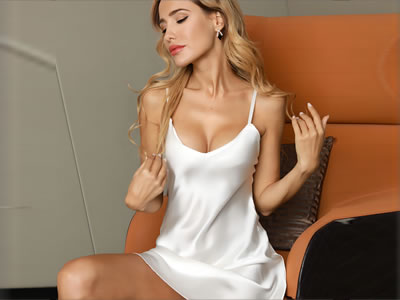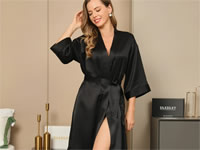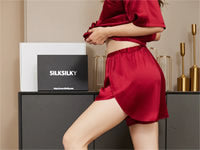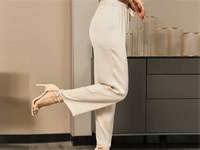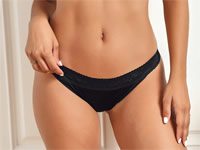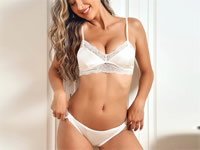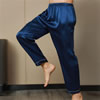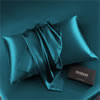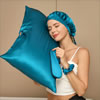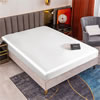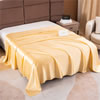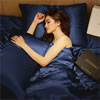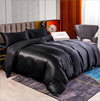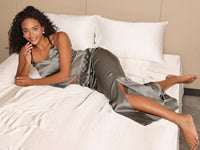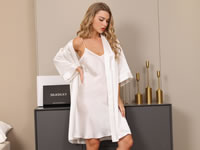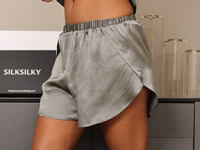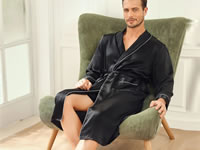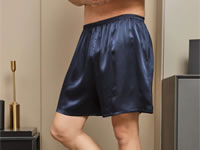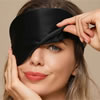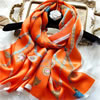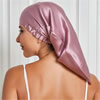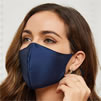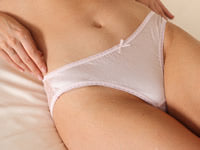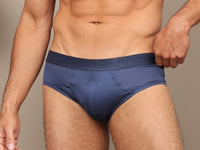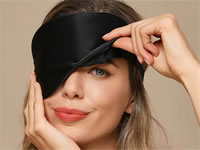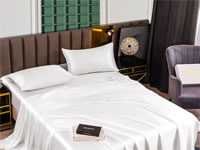How to Get Rid of Back Acne?
Share
Table of Contents
Welcome to our comprehensive guide on tackling one of the most common skincare concerns: back acne. Whether you're a teenager navigating through hormonal changes, an athlete constantly sweating it out, or simply someone dealing with oily skin, you're not alone in this battle. Back acne, also known as "bacne," can be frustrating and sometimes even painful, but with the right knowledge and strategies, you can effectively manage and minimize it.
In this article, we'll delve into the various factors contributing to back acne, from hormonal fluctuations to lifestyle habits, and explore effective treatments to help you achieve clearer, smoother skin. Whether you're seeking preventive measures, wondering about the causes, or looking for solutions, we've got you covered. Let's dive in.
Who Might Get Back Acne
- Teenagers experiencing hormonal changes: Adolescence brings about significant hormonal fluctuations, leading to increased sebum (oil) production. This excess oil, combined with dead skin cells, can clog hair follicles on the back, resulting in acne breakouts.
- Athletes and individuals engaging in heavy physical activities: Regular exercise is excellent for overall health, but it also means increased sweating. When sweat mixes with bacteria and dead skin cells on the surface of the skin, it can lead to clogged pores and acne flare-ups, particularly on the back where sweat tends to accumulate.
- People with oily skin types prone to clogged pores: Individuals with naturally oily skin have a higher tendency to develop clogged pores, making them more susceptible to acne, including back acne. The excess oil can mix with dead skin cells and environmental debris, leading to blockages in the hair follicles and subsequent breakouts.
- Those who wear tight clothing that traps sweat and bacteria against the skin: Tight-fitting clothing, such as sports bras or compression shirts, can create friction against the skin, trapping sweat and bacteria. This environment provides an ideal breeding ground for acne-causing bacteria, contributing to the development of back acne.
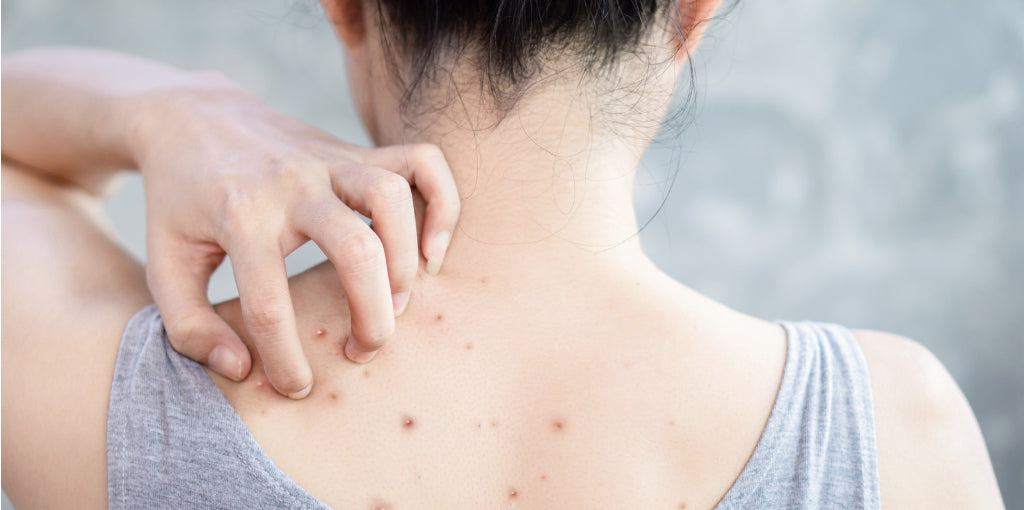
What Causes Back Acne
-
Hormonal Fluctuations: Changes in hormones, like during puberty or hormonal treatments, can increase sebum production, leading to clogged pores and acne on the back.
-
Sweating and Friction: Excessive sweating from physical activity, coupled with friction from tight clothing, can irritate the skin and promote acne development.
-
Hygiene Habits: Poor cleansing practices allow sweat, oil, and dead skin cells to accumulate, contributing to back acne.
-
Genetics: Inherited factors can predispose individuals to acne-prone skin, affecting sebum production and skin cell turnover.
-
Medications and Diet: Certain medications and dietary factors may disrupt hormone balance or exacerbate inflammation, influencing back acne.
12 Science-Backed Tips for Treating Back Acne

-
Maintain Good Hygiene:
- Regularly cleanse the back with a gentle cleanser to remove sweat, oil, and impurities.
- Opt for non-comedogenic moisturizers and sunscreen to avoid clogging pores.
- Consider using an antibacterial body wash containing ingredients like benzoyl peroxide or salicylic acid to target acne-causing bacteria.
-
Exfoliation:
- Incorporate exfoliating products containing salicylic acid or glycolic acid to remove dead skin cells and unclog pores.
- Be gentle when exfoliating to avoid irritating the skin, especially if acne lesions are present.
-
Lifestyle Changes:
- Wear loose-fitting clothing made of breathable fabrics like cotton or moisture-wicking materials to reduce friction and allow the skin to breathe.
- Shower immediately after sweating or exercising to remove sweat and bacteria from the skin's surface.
- Choose Antimicrobial Fabrics: Swap out your bedding and sleepwear for fabrics like silk, which have antimicrobial properties and are less likely to harbor bacteria.
- Don’t Squeeze or Pick Back Lesions: Resist the urge to squeeze or pick at acne lesions, as this can lead to further inflammation, infection, and scarring.
- Avoid Excessive Sun Exposure: While sunlight may temporarily improve acne, excessive sun exposure can lead to skin damage and worsen acne over time. Use sunscreen with broad-spectrum protection and avoid prolonged sun exposure, especially if using acne medications that increase sensitivity to sunlight.
-
Professional Treatments:
- Consult a dermatologist for treatments such as chemical peels or microdermabrasion to exfoliate the skin and unclog pores.
- Laser therapy may be recommended to target acne-causing bacteria and reduce inflammation, especially for severe or persistent cases.
When To See A Dermatologist
If you experience any of the following, it may be time to schedule an appointment with a dermatologist:
-
Persistent or severe acne that doesn't respond to over-the-counter treatments: If your back acne persists despite trying various over-the-counter treatments, a dermatologist can provide personalized treatment options tailored to your specific skin needs.
-
Acne accompanied by pain, inflammation, or scarring: Painful acne lesions, significant inflammation, or scarring on the back may require professional intervention to prevent further complications and improve skin health.
-
Acne that affects emotional well-being or self-confidence: If back acne negatively impacts your emotional well-being or self-confidence, seeking professional help from a dermatologist can address both the physical and psychological aspects of acne management.

FAQs about Back Acne
Q1. How do you get rid of back acne fast?
A1. While there's no overnight solution, consistent skincare practices such as cleansing, exfoliating, and using topical treatments can help improve back acne over time. Additionally, incorporating lifestyle changes like wearing breathable fabrics and avoiding pore-clogging products can aid in faster healing.
Q2. Why am I getting acne on my back?
A2. Back acne, or "bacne," can be caused by various factors including hormonal fluctuations, excessive sweating, genetics, and poor hygiene habits. Understanding the underlying cause can help tailor an effective treatment plan.
Q3. Does Bacne go away with age?
A3. For some individuals, back acne may improve with age as hormonal fluctuations stabilize and lifestyle habits change. However, others may continue to experience bacne into adulthood. Consistent skincare and lifestyle practices can help manage and minimize breakouts.
Q4. Can diet affect back acne?
A4. Some studies suggest that certain dietary factors, such as consuming high-glycemic foods or dairy products, may exacerbate acne in some individuals. However, the relationship between diet and acne is complex and varies from person to person.
Q5. Can stress worsen back acne?
A5. Yes, stress can contribute to acne flare-ups by triggering hormonal changes that increase sebum production and inflammation in the skin. Managing stress through relaxation techniques, exercise, and adequate sleep can help mitigate its impact on back acne.
Q6. How long does it typically take for back acne treatments to work?
A6. The timeline for improvement varies depending on the severity of the acne and the chosen treatment methods. While some individuals may see results within a few weeks, it may take several months for others to notice significant improvement. Consistency and patience are key.
Q7. Are there any home remedies for back acne that actually work?
A7. Some home remedies, like tea tree oil or apple cider vinegar, may help reduce inflammation and kill acne-causing bacteria. However, results can vary, and it's crucial to patch-test and consult a dermatologist before trying any home remedy. Incorporating antimicrobial fabrics like silk for household items such as bedding and pajama can enhance the effectiveness of these remedies, creating a cleaner environment and potentially improving skin health.
Why You Should Choose SILKSILKY Silk Pajamas And Silk Sheets
At SILKSILKY, we prioritize quality and sustainability in our silk products. Here's why you should choose SILKSILKY silk pajamas and silk sheets:
Premium Quality Silk: We use 6A-grade mulberry silk, known for its exceptional quality and luxurious feel. Our silk is 100% pure, ensuring maximum comfort and breathability for a restful night's sleep.
OEKO Certification: Our silk products are OEKO-TEX Standard 100 certified, guaranteeing that they are free from harmful substances and safe for your skin and the environment. You can trust SILKSILKY for high-quality, eco-friendly silk products.
Affordable Pricing: SILKSILKY originating from China, the land of silk, benefit from the easy accessibility of high-quality raw materials. With a rich heritage in silk production, sourcing top-grade silk is both efficient and cost-effective, allowing SILKSILKY to offer luxurious silk products at affordable prices without compromising on quality.
Superior Comfort and Durability: SILKSILKY silk pajamas and silk sheets are incredibly soft, smooth, and gentle on the skin. They offer unparalleled comfort and durability, ensuring long-lasting enjoyment and satisfaction.
Temperature Regulation: Silk is a natural temperature regulator, keeping you cool in the summer and warm in the winter. Our silk pajamas and sheets provide year-round comfort, allowing you to enjoy a comfortable sleep environment regardless of the season.
Hypoallergenic and Gentle: SILKSILKY silk is hypoallergenic and gentle on sensitive skin, making it suitable for individuals prone to allergies or skin irritations. Experience the ultimate in comfort and peace of mind with our silk products.
Choose SILKSILKY for the finest quality silk pajamas and silk sheets, crafted with care and attention to detail. Experience the luxury of SILKSILKY silk and transform your sleep experience today.
Conclusion
Back acne can be challenging to manage, but by understanding its causes and implementing preventive measures, clearer skin is within reach.
While home remedies like tea tree oil or apple cider vinegar may help, it's essential to consult a dermatologist for personalized advice. Incorporating antimicrobial fabrics like silk for household items can enhance these efforts.
With patience and consistency, you can take control of your back acne and achieve healthier skin.

